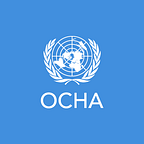Drought and food insecurity in the Horn of Africa
The Horn of Africa is facing one of the worst droughts in decades, resulting in food insecurity and high levels of malnutrition.
Two consecutive years of below-average rainfall, combined with the most extreme El Niño in 50 years, have left 5.6 million people in urgent need of humanitarian assistance. Food and water aid are desperately needed throughout the region, and livestock aid is a priority in south and south-east Ethiopia.
The Government of Ethiopia is leading the humanitarian response and working with humanitarian actors to rapidly respond to the growing needs.
Currently, 208 trucks are delivering water aid to the 522 drought-affected areas. Rain is expected to arrive in March, which could provide some relief. But the needs relating to the developing emergency exceed the resources available.
Humanitarians estimate that 9.1 million people will require regular access to safe drinking water, and some 1.9 million households will need livestock support. Partners also estimate that 303,000 children will suffer from severe acute malnutrition this year.
Ethiopia continues to build resilience and meet residual needs following the most recent El Niño-related crisis. But there is now another challenge: the negative Indian Ocean Dipole. This climatological factor causes irregular oscillation of ocean-surface temperatures. It is contributing to below-average precipitation in the region, eroding coping capacities and hampering efforts to meet growing humanitarian needs.
Food insecurity has become more prevalent, threatening livelihoods and putting thousands of people at risk. Eighty-five per cent of Ethiopia’s workforce is employed by the agriculture and livestock industries, and these people are among the hardest hit by the water shortages.
In Ethiopia’s Somali region, the drought is already forcing impoverished pastoral families to migrate in search of reliable water sources and pasture for their livestock. Close to 10,000 households are reported displaced and have settled in over 45 temporary shelter sites throughout the region. But these numbers are expected to rise as the drought worsens. Livestock assistance, including animal health, destocking and animal feed support, is urgently needed to prevent hunger and save lives.
Last month, UN Emergency Relief Coordinator Stephen O’Brien spoke at the African Union Summit High-Level Event on the Humanitarian Situation in Ethiopia. “We have no time to lose,” he said. “Livestock are dying. Pastoralists and farmers are already fleeing their homes in search of water and pasture. Children — more often girls — are dropping out of school to help families survive. Hunger and malnutrition levels are already on the rise and will only worsen if assistance does not arrive on time, particularly among women, who are more likely to suffer from health problems and malnutrition during droughts.”
“We need to act now before it is too late,” said O’Brien. “This is why I am calling on international partners to join the Ethiopian Government in funding the 2017 Humanitarian Requirements Document, which seeks US$948 million to assist 5.6 million people whose lives, livelihoods and well-being depend on our support.”
